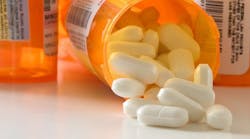The U.S. continues to struggle with substance abuse disorders (SUDs). Data shows that 70% (about 13.6 million workers) of all adults with an alcohol or illicit drug use disorder are employed. The 13.6 million workers with a SUD represent nearly 9% of all employed adults. About 1.9 million workers (1%) receive treatment annually for a SUD, and about 13.3 million workers (nearly 9%) report that they are in recovery or have recovered from a past or present substance use problem.
Looking specifically at people with SUD, approximately 53% have a mild disorder, 23% have a moderate disorder, and 24% have a severe disorder. The term addiction often is used to characterize severe SUDs.
To help employers understand and support recovery, in a blog entry on NIOSH, the authors summarized a new article published in Occupational Health.
What Is SUD Recovery?
Recovery involves accumulating positive benefits obtained by developing or rebuilding a healthy, productive, and meaningful life, according to the blog article. For recovery to be sustainable and empowering, research has shown that it needs to be voluntary and self-directed.
First-line treatment can involve using medications in conjunction with behavioral treatments or involvement in peer support groups (e.g., Alcoholics Anonymous, Narcotics Anonymous, Medication-Assisted Recovery Anonymous) for severe opioid and alcohol use disorders. However, no FDA-approved medications exist for other severe SUDs.
The article suggests multiple pathways to recovery exist.
- The stage of recovery will differ across individuals based on its length and its level of impact on an individual’s functioning in daily activities: (1) early recovery—1 to 11 months, (2) sustained recovery—1 to 5 years, and (3) stable recovery—5 or more years. As the recovery length increases, the annual risk of SUD recurrence drops substantially. Among individuals who have been in recovery for 5 or more years, the chance of recurrence of their SUD is approximately the same as the chance of someone in the general population developing a substance use disorder.13
- SUD recovery benefits from adopting a chronic care model. The traditional acute care model promotes an expectation that single or short-term treatment episodes will cure individuals with SUD. However, such an expectation does not exist for other chronic health problems, like diabetes or asthma, for which there is no cure. In the acute care model, SUD treatment often is considered ineffective when symptoms of SUD return. In contrast, a chronic care model recognizes the potential need for multiple cycles of treatment, symptom remission or recurrence, and re-establishment of treatment and self-management before a person achieves stable recovery. In fact, the symptom recurrence rate for SUDs due to nonadherence to treatment is similar to that for Type 1 diabetes, hypertension, and asthma Therefore, the recurrence of symptoms during or after treatment does not indicate that SUDs are untreatable. Instead, it is consistent with other chronic disorders requiring a lifelong commitment to treatment, including adjustments or multiple treatment approaches and methods treatments for its management.
- Having a SUD or being in recovery from a SUD can lead to stigma and discrimination in the workplace. Specifically, the stigma associated with a SUD may result in
- difficulty obtaining or maintaining employment;
- precarious employment or a restriction to lower-paying work;
- unfair oversight that reduces job performance;
- limited promotion opportunities;
- experiencing social exclusion; and
- difficulty obtaining employer accommodations.
Such stigma and discrimination in the workplace may undermine access to treatment, treatment initiation, and sustainability of recovery efforts.
Workplace Supported Recovery literature has shown the importance of employment, which can play a vital role in an employee’s SUD recovery. Consequently, NIOSH and national and state-level agencies, as well as recovery organizations recommend Workplace Supported Recovery resources.
While companies can provide critical resources (e.g., income, health benefits, time structure and regular activity, social contacts, purpose and meaning, development of skills, goal achievement, and status and identity), it’s also essential to “consider that work and the workplace may expose employees to risk factors for substance misuse and SUDs, such as work stressors, substance availability, and workplace social norms that support substance misuse.”
Examples of work-related hazards that threaten recovery may include:
- Negative work conditions and outcomes (excessive demands, bullying, job insecurity, hazardous physical work conditions, work-related injuries);
- Norms and social rituals that increase substance use;
- Physical availability of drugs or alcohol in the workplace; and
- Stigma and discrimination.
Examples of workplace recovery supports may include:
- Positive work conditions (fair treatment and rewards, recognition, promotion opportunities, meaningful work, ability to develop and use relevant skills, social support from coworkers and supervisors);
- Workplace social control (low mobility during work hours, high task interdependence, direct contact with coworkers and the public); and
- Organizational support, reflects a human capital view of employees as making valuable contributions and warranting time and resources to develop their skills.
Promoting Workplace Supported Recovery
While NIOSH notes that more research is needed, there are steps employers can take to promote SUD recovery efforts among employees.
- Prevent work-related injuries and illnesses and reduce negative work conditions that could exacerbate substance use among employees with a current SUD or contribute to a return to use among employees in recovery.
- Support the development of favorable work conditions that provide internal (e.g., self-efficacy) and external (e.g., peer and supervisor support) resources needed to initiate and sustain recovery efforts.
- Promote using nonpharmacologic treatments and nonopioid medications, when appropriate, for pain management associated with a workplace injury or illness.
- Provide information and access to care for a SUD when needed, including access to medication-based and/or individual counseling.
- Support employment of individuals in treatment and recovery.
- Extend workplace accommodations and other return-to-work assistance.
- Offer peer support and peer coaching to bolster the social supports available to workers in recovery.
- Promote a work culture that supports workers in recovery (for example, awareness building, stigma reduction, and alcohol-free social events).
